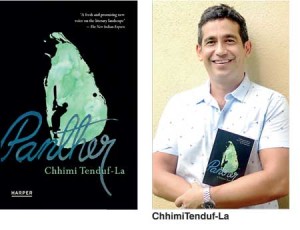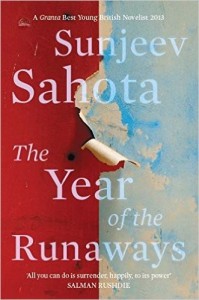Chhimi Tenduf-La, “Panther”
 Sri Lanka is such a beautiful country. We have it all; the beaches, the history, the hills, the heritage, the food, the smiling faces, the hospitality — and now the peace. I am getting used to this. I think I can move on. …I call up some old friends; Gish and Gayan ( Sinhalese Buddhists), Khuzi (Muslim), Gajen ( Tamil Hindu), and Shoban ( mixed-race Christian). All different, but all very similar. All just young guys, enjoying life, enjoying peace.
Sri Lanka is such a beautiful country. We have it all; the beaches, the history, the hills, the heritage, the food, the smiling faces, the hospitality — and now the peace. I am getting used to this. I think I can move on. …I call up some old friends; Gish and Gayan ( Sinhalese Buddhists), Khuzi (Muslim), Gajen ( Tamil Hindu), and Shoban ( mixed-race Christian). All different, but all very similar. All just young guys, enjoying life, enjoying peace.
My batting technique is still strong, so the boys encourage me to take up cricket professionally. I am not too old, I know it, but do I have the heart? Is it my calling? Can I use my experience to make a difference, like one of the greatest cricketers of all time, Kumar Sangakkara? He said, ‘I am Tamil, Sinhalese, Muslim and Burgher. I am a Buddhist, a Hindu, a follower of Islam and Christianity. I am today, and always, proudly Sri Lankan.’
Chhimi Tenduf-La’s second novel, Panther, is a cross between young adult fiction and a war novel. It is not necessarily because of the story plot and it being set in Sri Lanka, but it is also the style of writing. It has the gritty, bold experimentation in narrative, character sketches and issues often seen contemporary young adult fiction. At the same time it has the urgency and inexplicable situations often seen in war novels, surprisingly always taken in one’s stride since bizarreness is a way of life in war torn areas. So the explosively weird beginning to the novel where Prabu’s family is scattered, after which he is admitted to a posh private school given his wonderful cricketing skills is surreal, yet plausible — after all it is a society being reconstructed after civil strife.
As is common with a lot of contemporary South Asian literature there are intense conversations about identity. But it is not just about the conversations, it is the literary landscapes explored in novels like Panther making it very clear that despite extreme fundamentalist forces in South Asia preferring to identifying a nation with a particular socio-religious entity, they are simply unable to make sufficient fissures in the community. Panther has plenty of frank, honest and open conversations about religion, identities, attitudes — a characteristic trait of young adult fiction. It is perfect that the novel revolves around cricket, the national pastime game in many South Asian countries. Another aspect that sets this novel apart from contemporary Sri Lankan literature is the boldness with which it makes no qualms about identifying communities and mixed-races of the individuals. It plots places and people on a very real landscape unveiling the rich complexity of the nation rather than leaving it vaguely as a story about war-torn Sri Lankan, predominantly a conflict between the Tamil and Sinhalese with some Buddhists too.
Chhimi Tenduf-La is half-English and half-Tibetan who grew up in Hong Kong, London, New Delhi and Colombo. He now lives in Colombo with his family.
Read Panther.
Chhimi Tenduf-La Panther Harper, an imprint of HarperCollins Publishers, NOIDA, India. Pb.pp. 270 Rs 299
18 September 2015

